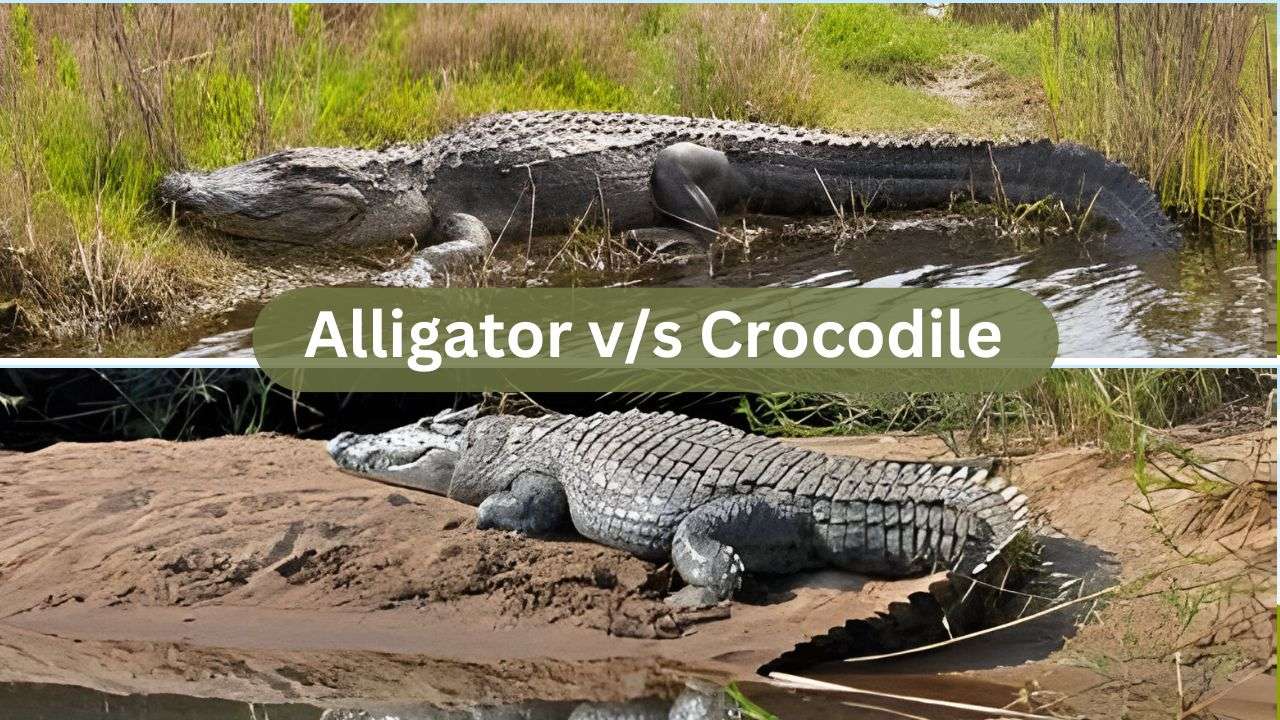The biggest difference between alligators and crocodiles is their snout shape – according to Britannica, alligators have a broad, U-shaped snout while crocodiles have a narrow, V-shaped one. Alligators and crocodiles are often mistaken for one another. While they are both large, powerful reptiles with similar appearances, some key distinctions tell them apart. Understanding these differences can help you appreciate the unique biological adaptations and behaviors of each impressive animal.

|
| Crocodile |
Color | Dark Green, almost black | Light Green, Grey, Brown |
Snout Shape | U shape | V shape |
Feet | Webbed | non-Webbed |
Speed | Up to 25mph | Around 18mph |
Weight | ~900-1000 pounds | ~2,000 pounds |
Length | Up to 15 feet long | Up to 20 feet long |
Differences in Habitat and Distribution

Saltwater Tolerance: One major he difference is their tolerance for saltwater. Crocodiles have well-developed salt glands that allow them to thrive in saltwater environments like coastal areas and estuaries. Alligators prefer freshwater habitats, such as swamps, marshes, and lakes, though they can tolerate some salty water.
Geographical Location: Alligators are primarily found in two locations:
the southeastern United States and eastern China. Crocodiles, on the other hand, have a much wider distribution and can be found throughout the tropics in Africa, Asia, the Americas, and Australia.
Differences in Behavior and Temperament
Aggression: Crocodiles are generally considered more aggressive than alligators. This is particularly true with larger crocodile species like the Nile crocodile and saltwater crocodile.
While alligators can still be dangerous, they are more likely to avoid conflict with humans if left undisturbed.
Hunting Strategies: Crocodiles are often ambush predators, lying in wait for their prey to approach the water’s edge. Alligators are more opportunistic hunters and sometimes actively pursue their prey.
Evolutionary Lineage
Despite their similarities, alligators, and crocodiles belong to different taxonomic
families:
Alligators: Belong to the family Alligatoridae, which includes the American alligator and Chinese alligator.
Crocodiles: Belong to the family Crocodylidae, which includes true crocodiles like the Nile crocodile and saltwater crocodile.
Caimans, a close relative of alligators, belong to the Alligatoridae family but reside in Central and South America. While visually similar to alligators, caimans tend to be smaller and have more heavily armored skin.
Conclusion
Though sometimes confused, alligators and crocodiles are distinct reptiles with fascinating differences to observe. By understanding their snout shape, tooth arrangement, habitat preferences, behavior, and evolutionary history, we can gain a deeper appreciation for the diversity and complexity of the natural world. Whether you’re observing them from a safe distance in the wild or learning about them in a controlled setting like a zoo, these ancient predators deserve our respect and protection.




